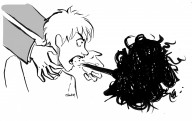 Evaluating Hate Speech Codes
Evaluating Hate Speech Codes
By Sanne Steinstra
Published in the Lewis & Clark Pioneer Log October 2009
In light of the recent events regarding swastika graffiti on campus and the administration’s promise to write hate speech rules, it seems an appropriate time to evaluate the necessity and effectiveness of such policies.
Let’s first examine a history of hate speech rules. In the 1980s and 1990s, “speech codes” were written in over 350 universities across the country that regulated potentially offensive or bigoted speech among students and faculty. Many universities saw their new rules challenged and several cases even made it to the U.S. Supreme Court.
In 1991, UWM Post v. Board of Regents of University of Wisconsin saw the Supreme Court overturn the university’s hate speech rules, which were written in response to, among other things, a “slave auction” hosted by a fraternity. The court disagreed with the institution’s justification that its codes were designed to prevent “fighting words,” one of the only universally accepted defenses for going against the First Amendment.
This case, however, upheld the First Amendment and the court found that “the suppression of speech, even where the speech’s content appears to have little value and great costs, amounts to governmental thought control.”
In 1994, a group of students at Stanford University brought a case to the Supreme Court that challenged the school’s speech code, which is under the jurisdiction of the Leonard Law. Since 1992, the Leonard Law has granted all students of secular private universities and colleges in California the right to free speech under the First Amendment. The Supreme Court agreed with the students and ruled that Stanford’s policies were illegal.
All public universities in the country are also required to abide by the First Amendment, but as a private institution outside of California, Lewis & Clark does not have this obligation. Does this mean, however, that the administration has the right to infringe upon students’ privilege to free speech?
The American Civil Liberties Union (ACLU) believes that “[c]ollege administrators may find speech codes attractive as a quick fix” but that in actuality, regulations of hate speech at places of higher learning do not address the real issue: bigotry and intolerance amongst its students.
As the ACLU also points out, preventing expressions of hate and bigotry only makes it harder to see the problem. When college campuses suffer from actions spawned by hate, as LC and nearby Reed College have of late, administrators and students are given the opportunity to “organize effectively to counter bad attitudes, possibly change them, and forge solidarity against the forces of intolerance.”
While some may accuse this attitude of supporting inaction, the truth is that there are plenty of actions to be taken in response to the swastika graffiti at LC and the Anti-Semitic jokes at Reed. Writing potentially restrictive hate speech codes is just not one of them.
Since the Supreme Court defended the Leonard Law in California, there have been attempts to pass a federal law that would apply to all private universities and colleges in the United States, but these attempts continue to fail.
Thus, one potentially constructive action for students to take is to write letters to Congress and state representatives. By sharing the story about the swastika graffiti on our campus, a more universal Leonard Law could protect students of private colleges like ours.
For now, the ACLU puts it best: “more speech—not less—is the best revenge.” Wouldn’t it be better to prove that students here are capable of saying—and writing, drawing, sketching, painting or carving—intelligent and worthwhile things? Perhaps then, the administration wouldn’t feel the need to write new speech codes after all.